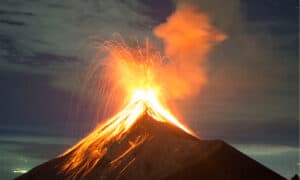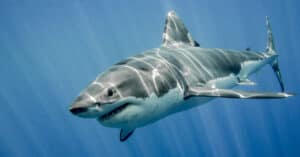Traveling to bodies of water for relaxation and to take in the sights is a common recreational goal. Most of these bodies of water play host to entire ecosystems full of plants and animals. Have you discovered that some of the tranquil-looking lakes of the world are infested with sharks?
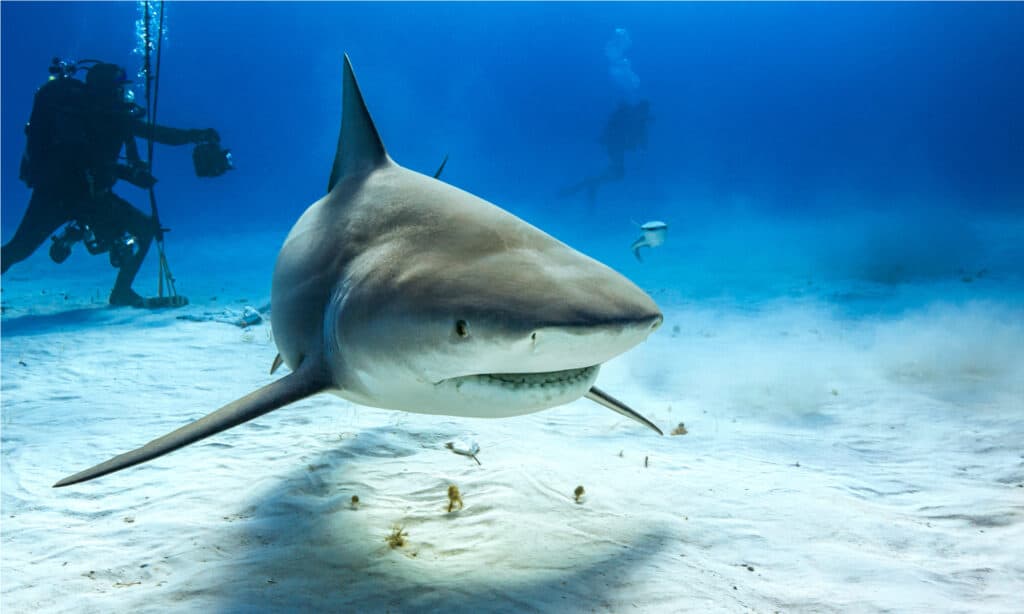
Bull sharks are able to survive in freshwater.
©Carlos Grillo/Shutterstock.com
Most sharks can’t survive in freshwater environments because their anatomy can’t support them. Their bodies are full of salts, and due to osmosis which demands that water salinity be balanced, freshwater fills their bodies and ruptures their cells. This kills saltwater sharks.
Is it Normal for Sharks to be in Lakes?
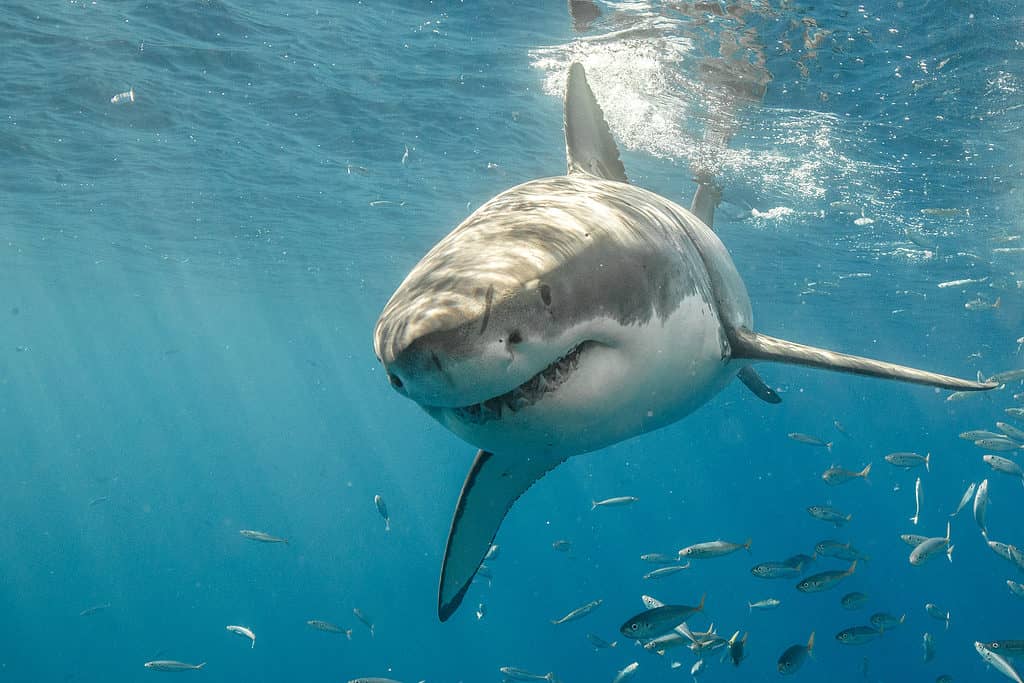
Great white sharks
are oceanic creatures and cannot survive in freshwater lakes. While some species of sharks, such as bull sharks, are capable of surviving in saltwater.
©iStock.com/ShaneMyersPhoto
It is not normal for most sharks to live in lakes. Certain shark species, however, are able to live in freshwater, saltwater, and brackish water. That’s because their livers can respond to the salinity of their environment and flush freshwater through their system to maintain homeostasis. They do this by peeing a lot more when they’re in freshwater than in saltwater.
Bull sharks are notoriously aggressive and they’re responsible for the most shark bites around the world every year. What lakes on earth are infested with these sharks? We’ll find out more now.
Discovering the Shark-Infested Lakes on Earth
These are some of the lakes that sharks live in:
- Lake Nicaragua in Nicaragua
- Carbrook Golf Club in Queensland, Australia
- Lake Pontchartrain in Louisiana
- Lake Maracaibo in Venezuela
- Lake Jamoer in New Guinea
- Lake Sentani in Indonesia
- Lake Izabal in Guatemala
- Lake Bayano in Panama
1. Lake Nicaragua in Nicaragua
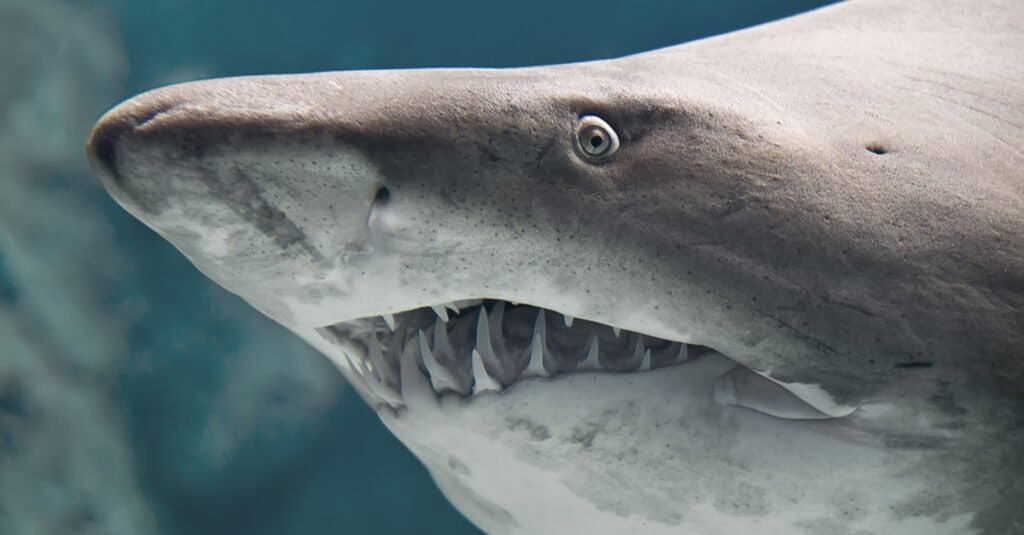
Bull sharks travel to Lake Nicaragua by jumping a series of rapids.
©Havoc/Shutterstock.com
Bull sharks travel up the San Juan River to Lake Nicaragua and sometimes spend years in the lake before returning to the Caribbean Ocean. Lake Nicaragua is a freshwater lake, and it’s one of the largest in the Americas.
What’s amazing about this particular bull shark is its ability to jump over a series of 8 rapids on its way to the lake like a salmon. This behavior hasn’t been demonstrated by bull sharks anywhere else in the world and is unique to the Lake Nicaragua shark.
Sawfish are closely related to sharks, and they’re also found in Lake Nicaragua.
2. Carbrook Golf Club in Queensland, Australia
It’s believed that 12 bull sharks live in this lake. While there is no route back out to the ocean, the bull sharks in the lake are doing extremely well. They’re reproducing and are healthy.
The sharks made it to the lake during a huge flood in 1996. Six sharks remained in the lake when the water receded and evaporated. This population has since grown to the 12 present today.
3. Lake Pontchartrain in Louisiana
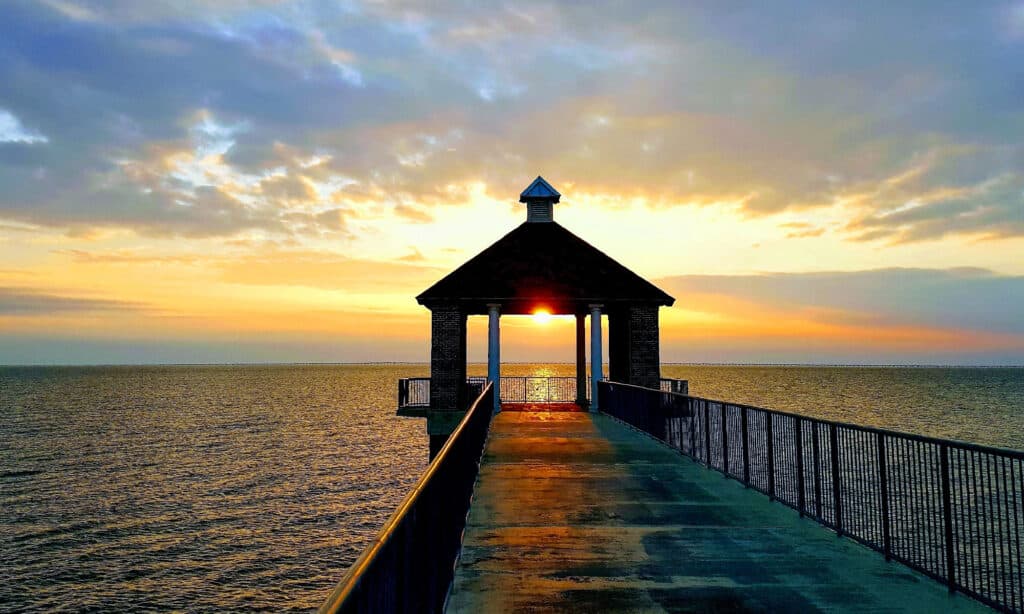
A seven-year-old boy named Trent was attacked by a bull shark in 2014 in Lake Pontchartrain.
©iStock.com/Idylle Images
A bull shark attacked a 7-year-old boy swimming in Lake Pontchartrain in 2014. The boy’s name is Trent and he is the first recorded case of a bull shark attack at this specific location.
There have been sharks up to 4 feet long caught by anglers at the lake and there are reports of sharks up to 6 feet long in the water. Summer is prime time for these sharks, so if you’re thinking about taking a dip in this lake when the temperatures are soaring, consider the potential consequences.
Juvenile bull sharks are the most frequently spotted in the lake, but that means there are adults around to create those juveniles. They make their way into the lake in the summer and move back out to the Gulf of Mexico in the fall.
The garfish is the other apex predator in the lake and scientists think the presence of the bull shark and the garfish show that the ecosystem is healthy.
4. Lake Maracaibo in Venezuela

Bull sharks use Lake Maracaibo as a nursery.
©Katja Tsvetkova/Shutterstock.com
Whether or not Lake Maracaibo is a true lake is up for debate. Some consider it a bay and others consider it a tidal estuary or a lagoon. It has brackish water.
Bull sharks come here to use the lake as a nursery. Most of the bull sharks found in the lake are juveniles.
Lake Maracaibo is one of the largest lakes in South America. It is also the location of the most lightning on earth. This phenomenon is called the Catatumbo Lightning.
Duckweed is choking the lake after certain flood events that fill Lake Maracaibo with the perfect blend of sediment. There are efforts to remove the weed when this happens, but it grows as fast as it can be killed. Pesticides don’t work, so the only method is to remove them physically.
5. Lake Jamoer in New Guinea
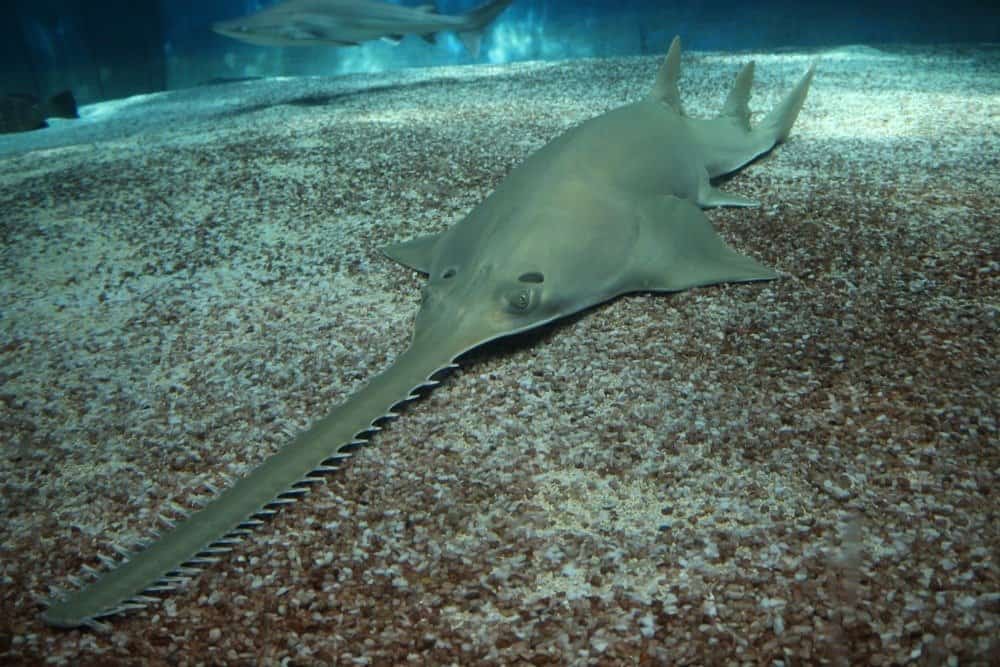
Large tooth sawfish are common around the world and in Lake Jamoer.
©Chaos2Light Images/Shutterstock.com
There have been bull sharks and sawfish sightings in this lake. Large-tooth sawfish are closely related to sharks. They’re a type of ray, and they enjoy the same kind of environment as bull sharks. They’re also capable of living in both freshwater and saltwater environments like bull sharks.
Sawfish are not aggressive, which is great news considering the aggression level of bull sharks. Large-tooth sawfish is the most common type of sawfish found around the world. They’re found in almost all of the same places that bull sharks are located.
6. Lake Sentani in Indonesia

Lake Sentani plays host to both bull sharks and sawfish.
©Krofoto/Shutterstock.com
Bull sharks and sawfish have been spotted here. During WWII, a soldier dropped a grenade into the lake in the hopes of killing fish for his soldiers to eat. He was successful, and a large tooth sawfish was one of the animals that emerged.
7. Lake Izabal in Guatemala

There have been two bull shark attacks on Lake Izabal in 70 years.
©iStock.com/giovannibussu
Like most of the lakes on our list, bull sharks have been spotted in this lake. Lake Izabal is drained by the Rio Dulce into the Caribbean Sea. Rio Dulce is a shallow river with no rapids, so it’s easy for bull sharks and sawfish to traverse.
There are records from about 70 years ago of two bull shark attacks on the lake. Anecdotal evidence suggests more sawfish than bull sharks call Lake Izabal home, but scientific surveys show otherwise.
8. Lake Bayano in Panama
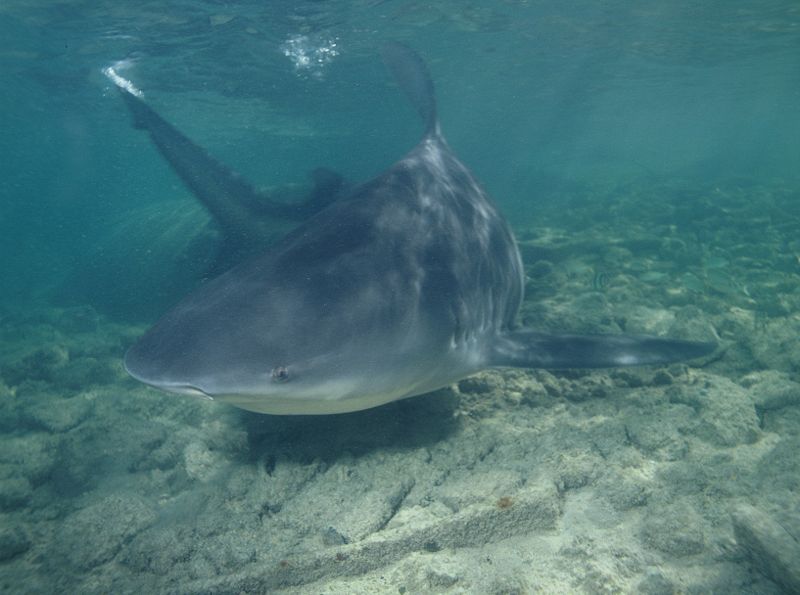
The bull sharks in Lake Bayano aren’t sustainable because the breeding stock is too small.
©Albert Kok at Dutch Wikipedia (Original text: albert kok), Public domain, via Wikimedia Commons – License
Lake Bayano is a manmade tropical lake in Panama that has bull sharks in it. It also houses large-tooth sawfish. Whether or not these animals will survive in this lake is questionable because it’s uncertain if there is enough breeding stock or not.
This lake was created by a dam on the Bayano River in 1976.
Are There Sharks in the Great Lakes?
There is anecdotal evidence and myths that state there are sharks in the Great Lakes, but this has never been substantiated scientifically.
There are stories of sightings of great white sharks in Lake Michigan. They probably saw an errant bull shark, though no bull sharks in the Great Lakes are on record.
Where is Lake Nicaragua Located on a Map?
Lake Nicaragua, also known as Cocibolca or Granada, is a freshwater lake situated in Nicaragua. It is of tectonic origin and covers an area of 8,264 km², making it the biggest lake in Central America, the 19th largest globally, and the tenth largest in the Americas. Its size is slightly smaller than that of Lake Titicaca.
Here is Lake Nicaragua on a map:
Do the Great Lakes Have Sharks?
The truth is, that the largest of the Great Lakes, Lake Superior and Lake Michigan, are exceptionally deep and too cold to support shark populations. Although there have been reports of bull sharks venturing as far as 1,000 miles upstream in the Mississippi River, the waters there are significantly warmer compared to the Great Lakes.
Further, the most menacing predator within the Great Lakes ecosystem is the sea lamprey, an invasive species intentionally introduced.
Its primary target is the lake trout, often causing injuries as it hunts and eliminates them.
The photo featured at the top of this post is © Vladimir Wrangel/Shutterstock.com
More from A-Z Animals
Thank you for reading! Have some feedback for us? Contact the AZ Animals editorial team.




